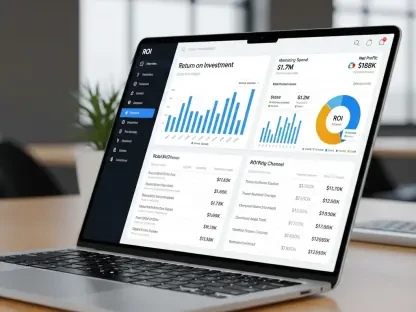The Global Convenience Store Management Software Market is poised for significant growth, with projections indicating an expansion from $1.7 billion in 2024 to $4 billion by 2032. This growth trajectory, marked by a compound annual growth rate (CAGR) of 10.1%, underscores the increasing adoption and reliance on advanced software solutions within the retail sector. Convenience store management software plays a crucial role in streamlining various retail operations, assisting retailers in managing inventory, sales, and customer engagement processes efficiently. By enabling data-driven decision-making, these tools enhance the overall functionality and operational efficiency of convenience stores, encompassing several software categories, including Inventory Management, POS Systems, Employee Scheduling, and Loyalty Programs, each contributing uniquely to the retail ecosystem.
Market Overview and Scope
Convenience store management software’s primary function is to streamline operations across various aspects of retail management. These systems help track stock levels, manage orders, and ensure stores are adequately stocked, thereby reducing the risks of overstocking or stockouts. Efficient Point of Sale (POS) Systems are integral as they facilitate seamless transactions and generate valuable sales data for analysis. The implementation of Employee Scheduling software aids in optimizing workforce management, ensuring that the right number of staff is available at peak times. Additionally, Loyalty Programs incentivize customer retention by offering rewards, thus fostering long-term customer relationships and improving store profitability.
With the increasing complexity in convenience store operations, the adoption of advanced software solutions becomes essential. The software enables better customer management by providing insights into customer preferences and purchasing behaviors. Financial Reporting tools further aid store managers by offering detailed insights into sales performance and profitability, allowing for better financial planning and strategy formulation. Workforce Management systems streamline employee schedules, enhancing productivity and reducing labor costs. Collectively, these software solutions transform the retail operations by providing a comprehensive suite that addresses the diverse needs of convenience stores, positioning retailers to remain competitive in a fast-evolving market landscape.
Key Software Categories
Managing inventory efficiently is a critical aspect of convenience store operations, and Inventory Management software plays an instrumental role in this process. It helps store managers keep track of stock levels, orders, and deliveries, ensuring the store is neither overstocked nor understocked. By automating the replenishment process, these systems reduce the manual workload and mitigate the risk of human error. POS Systems are equally vital as they handle all sales transactions, generate purchase receipts, and provide real-time sales data, which is crucial for inventory tracking and financial reporting. This data enables store owners to make informed decisions about product offerings and pricing strategies.
Employee Scheduling software contributes significantly to operational efficiency by ensuring that the right staffing levels are maintained throughout the day. It allows managers to create and adjust schedules based on peak hours and employee availability, optimizing labor costs and enhancing customer service. Loyalty Programs are designed to encourage repeat business by rewarding customers for their continued patronage. These programs often include features such as personalized discounts, points accumulation, and special promotions, which help build stronger customer relationships and increase store foot traffic. Together, these software categories form a cohesive system that enhances the overall operational efficiency of convenience stores.
Application and Usage
The application of convenience store management software extends across various operational needs, providing an integrated solution for store managers to oversee multiple aspects of their business efficiently. Inventory Tracking ensures that stores maintain optimal stock levels, thereby reducing the risk of overstocking, which ties up capital, or stockouts that can lead to missed sales opportunities. These systems provide real-time data on stock levels and automatic alerts when inventory dips below predetermined thresholds, enabling timely reordering. Customer Management tools gather and analyze data on customer buying habits, preferences, and feedback, allowing stores to tailor their offerings and marketing strategies to better meet customer needs, ultimately enhancing their shopping experience and driving customer loyalty.
Financial Reporting software is another critical component as it provides comprehensive insights into sales performance, costs, and profitability, allowing store managers to make informed decisions about product assortment, pricing, and promotions. This financial data helps in planning budgets, forecasting future sales, and identifying areas where cost savings can be made. Workforce Management tools streamline employee scheduling, ensuring that staff levels are optimized according to the store’s operational needs. This improves productivity and reduces labor costs by preventing overstaffing during slow periods and understaffing during peak times. Overall, the integration of these software solutions supports the efficient management of convenience stores, leading to improved operational performance and profitability.
Geographic Segmentation and Market Dynamics
The convenience store management software market is geographically segmented to understand varying adoption rates and growth potentials across different regions. North America is identified as the leading region, driven by its advanced technological infrastructure and a mature retail sector. The high concentration of convenience stores and the propensity to adopt innovative technologies contribute significantly to North America’s dominance. The region’s retailers are keen on deploying solutions that enhance operational efficiency, customer engagement, and profitability. Meanwhile, Asia-Pacific stands out as the fastest-growing market due to the rapid expansion of retail networks, economic growth, and increasing urbanization in countries like China and India. The region’s burgeoning middle class and the growing adoption of digital technologies in retail present substantial growth opportunities.
Latin America, West Europe, Central & Eastern Europe, Northern Europe, Southern Europe, East Asia, Southeast Asia, South Asia, Central Asia, Oceania, and the Middle East & Africa (MEA) also exhibit promising growth prospects, although at varying rates. Factors influencing these markets include economic conditions, technological advancements, regulatory environments, and consumer behavior. For instance, the Middle Eastern and African regions, including countries like South Africa, Saudi Arabia, UAE, Israel, and Egypt, are exploring the potential of adopting convenience store management software to streamline operations amidst a growing retail sector. These geographic insights highlight the diverse market dynamics and underscore the importance of regional strategies tailored to specific market conditions.
Key Players and Competitive Landscape
Prominent companies in the convenience store management software market, such as NCR Corporation, Oracle, SAP, CStore Pro, PDI Software, Verifone, IT Retail, Petrosoft, Bulloch Technologies, Pinnacle Corporation, KORONA POS, AccuPOS, POS Nation, Lightspeed, Square, Vend, ShopKeep, Clover, and Toast, are at the forefront of driving market development. These key players employ competitive strategies, such as product innovation, mergers and acquisitions, and strategic partnerships, to enhance their market presence and broaden their product offerings. Their contributions are pivotal in shaping the market landscape, elevating the industry’s standards, and fostering technological advancements.
The competitive landscape is characterized by continuous innovation and development, as companies strive to offer integrated solutions that cater to the evolving needs of convenience stores. By focusing on user-friendly interfaces, robust functionalities, and seamless integration capabilities, these companies aim to provide comprehensive solutions that enhance the overall retail experience. Their ability to adapt to market trends and customer preferences plays a crucial role in their success. Additionally, the expansion of technology applications and the introduction of mobile and cloud-based solutions further strengthen their competitive positions, enabling them to meet the demands of a rapidly changing retail environment.
Regional Analysis and Market Share
Detailed regional analyses shed light on the consumption, revenue, market share, and growth rates across different geographies, offering a comprehensive view of the market dynamics. For instance, regions in the Middle East and Africa, such as South Africa, Saudi Arabia, UAE, Israel, and Egypt, are key areas of interest, with regional retail sectors actively exploring convenience store management software adoption. North American territories, including the United States, Mexico, and Canada, showcase a mature market with high penetration rates and continuous demand for advanced retail technologies. These regions benefit from a robust retail infrastructure, widespread technological adoption, and strong consumer purchasing power.
Similar analyses extend to South America, Europe, and Asia-Pacific regions, highlighting unique market characteristics and growth potentials. European countries, with their developed economies and well-established retail networks, present a significant market for these software solutions. Meanwhile, emerging economies in Asia-Pacific are witnessing rapid growth due to economic development, urbanization, and the proliferation of retail chains. This regional segmentation underscores the varying degrees of market adoption, providing valuable insights for stakeholders to tailor their strategies according to specific regional dynamics and growth opportunities.
Analytical Tools and Market Insights
Market research methodologies, such as the five forces analysis and PESTLE analysis, provide a structured approach to understanding the intricate dynamics of the convenience store management software market. The five forces analysis examines critical factors, including the bargaining power of buyers and suppliers, the threats posed by new entrants and substitute products, and the intensity of competitive rivalry within the industry. This framework helps identify the competitive forces at play and offers insights into the market’s attractiveness and potential profitability. Complementing this, the PESTLE analysis delves into broader macro-environmental factors, exploring Political, Economic, Social, Technological, Legal, and Environmental influences that impact the market.
These analytical tools offer a comprehensive understanding of the external conditions shaping the industry, aiding stakeholders in making informed strategic decisions. For instance, political stability, economic growth, technological advancements, and regulatory policies significantly influence the market’s growth trajectory. By leveraging these insights, companies can identify opportunities and mitigate potential risks, ensuring sustainable growth and competitive advantage in the marketplace. This systematic approach to market analysis underscores the importance of data-driven decision-making and strategic planning in navigating the complexities of the convenience store management software sector.
Emerging Trends and Strategic Developments
Efficient inventory management is crucial for running a convenience store effectively, and Inventory Management software plays a vital role in this. It helps store managers monitor stock levels, orders, and deliveries, ensuring the store is neither overstocked nor understocked. By automating restocking, these systems reduce manual labor and minimize errors. POS systems are equally key, as they process all sales transactions, issue purchase receipts, and offer real-time sales data essential for tracking inventory and financial reporting. This data allows store owners to make smart decisions about product offerings and pricing strategies.
Employee Scheduling software significantly enhances operational efficiency by ensuring optimal staffing levels throughout the day. It lets managers create and adapt schedules based on busy periods and worker availability, optimizing labor costs and improving customer service. Loyalty Programs aim to foster repeat business by rewarding loyal customers. These programs often feature personalized discounts, points accumulation, and special promotions, which strengthen customer relationships and boost store traffic. Collectively, these software solutions create a cohesive system that elevates the overall operational efficiency of convenience stores.









